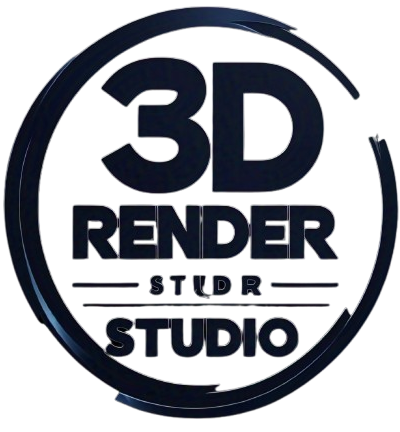Chevron kits, also known as chevron sealing kits or chevron packing kits, are an essential component in a wide array of industrial applications, particularly those involving pumps, valves, and various other mechanical equipment. These kits are primarily used for sealing purposes, ensuring that equipment operates efficiently and without leaks, thereby enhancing safety, performance, and longevity.
What Are Chevron Kits?
A chevron kit is a set of packing rings that are typically made from materials such as rubber, PTFE (polytetrafluoroethylene), or graphite. These materials are chosen for their resistance to heat, chemicals, and wear. The rings in a chevron kit are arranged in a specific “V” shape, often referred to as the chevron pattern. This arrangement allows the kit to effectively create a seal between two surfaces, preventing the leakage of liquids or gases, which can be critical in industries such as oil and gas, petrochemical, and food processing.
Chevron kits are designed to be used in reciprocating applications, where the equipment undergoes regular back-and-forth motion. As such, they are ideal for use in pistons, pumps, and valves, where maintaining a tight seal during each stroke is necessary for optimal performance. The flexibility of the chevron sealing system also allows for easy customization, accommodating different sizes and pressure ratings.
The Components of a Chevron Kit
A typical chevron kit consists of several individual components that work together to create a reliable seal. These include:
-
Chevron Rings: These are the primary sealing Chevron Kits components of the kit, usually made from a durable material that can withstand high temperatures and aggressive chemicals. The chevron rings are stacked on top of one another, forming a series of V-shaped seals.
-
Spacer Rings: Spacer rings are used to separate the chevron rings, ensuring that they remain properly aligned and evenly spaced during operation. These rings also help to distribute the pressure more evenly, reducing wear and extending the lifespan of the sealing system.
-
Back-Up Rings: These rings are used to prevent extrusion and provide additional support to the chevron rings. They are typically placed at the outermost part of the packing assembly.
-
Lubricants: While not always included directly in the kit, lubricants are often applied to the chevron packing to reduce friction and wear. Lubrication is especially important in high-speed applications where the sealing system experiences significant movement and friction.
Applications of Chevron Kits
Chevron kits are used across various industries due to their versatility, reliability, and cost-effectiveness. Some of the most common applications include:
-
Pumps: In centrifugal and positive displacement pumps, chevron kits are used to ensure that liquids and gases are contained within the system, preventing leaks and maintaining system efficiency. The packing material helps to reduce wear on pump components, extending their lifespan and minimizing the need for frequent maintenance.
-
Valves: Chevron kits are commonly used in valve stem applications to ensure a proper seal and prevent leakage of fluids or gases. This is particularly important in high-pressure or high-temperature environments where valve failure could result in dangerous consequences.
-
Hydraulic Systems: In hydraulic cylinders, chevron kits are used to seal the piston and rod to maintain pressure and prevent hydraulic fluid leakage. These kits ensure that hydraulic systems operate smoothly and safely.
-
Compressors: In compressors, chevron kits are used to seal the piston and cylinder, ensuring that air or gas is compressed effectively without leakage. These seals help maintain operational efficiency and prevent costly air or gas loss.
-
Food Processing: In food processing and pharmaceutical industries, chevron kits are often made from FDA-approved materials to ensure safety and hygiene. These kits are used in pumps and mixers that handle food and beverage products, preventing contamination and maintaining clean, safe operations.
Benefits of Using Chevron Kits
Chevron kits offer several distinct advantages in industrial applications. These include:
-
Effective Sealing: The chevron design creates a multi-stage seal, which is particularly effective in preventing leakage in reciprocating motion systems. This ensures that no matter the pressure or temperature conditions, the equipment remains tightly sealed.
-
Durability: Chevron packing is built to last, even under harsh conditions. Whether exposed to extreme temperatures, aggressive chemicals, or high pressure, chevron kits are designed to withstand demanding environments and maintain their performance over time.
-
Customization: Chevron kits are available in a wide range of sizes and materials, making them suitable for diverse applications across different industries. Customization options ensure that companies can find the perfect sealing solution for their specific needs.
-
Reduced Maintenance Costs: By maintaining a secure seal, chevron kits help prevent costly leaks, downtime, and repairs. Their durable construction minimizes the need for frequent replacement, offering long-term cost savings.
-
Easy Installation: Installing chevron kits is relatively straightforward, as they are designed for easy assembly and replacement. This ease of installation reduces downtime and simplifies maintenance tasks.
Conclusion
Chevron kits play a crucial role in ensuring the safe and efficient operation of industrial machinery. From pumps and valves to hydraulic systems and compressors, these sealing kits are versatile, durable, and effective in a wide range of applications. Their ability to create reliable seals, coupled with their longevity and ease of use, makes them an invaluable component in numerous industries. By investing in high-quality chevron kits, companies can enhance their equipment’s performance, reduce maintenance costs, and ultimately improve their operational efficiency.
